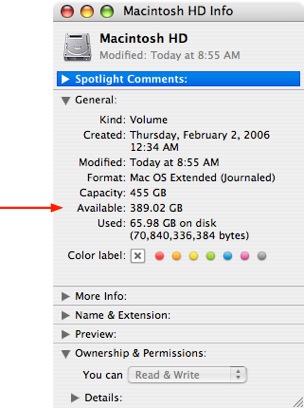

- How to view what apps are using how much space on mac free#
- How to view what apps are using how much space on mac mac#
- How to view what apps are using how much space on mac windows#
You can use Activity Monitor to determine if your Mac could use more RAM. To display more columns, choose View > Columns, then choose the columns you want to show. Swap Used: The amount of space being used on your startup disk to swap unused files to and from RAM. Until this memory is overwritten, it remains cached, so it can help improve performance when you reopen the app. Select the Compressed Memory column, then look in the VM Compressed column for each app to see the amount of memory being compressed for that app.Ĭached Files: The size of files cached by the system into unused memory to improve performance. When your computer approaches its maximum memory capacity, inactive apps in memory are compressed, making more memory available to active apps. This memory can’t be cached and must stay in RAM, so it’s not available to other apps.Ĭompressed: The amount of memory that has been compressed to make more RAM available. Wired Memory: Memory required by the system to operate. To the right, you can see where the memory is allocated.Īpp Memory: The amount of memory being used by apps. Memory Used: The amount of RAM being used. Physical Memory: The amount of RAM installed.
How to view what apps are using how much space on mac free#
Memory pressure is determined by the amount of free memory, swap rate, wired memory, and file cached memory. Memory Pressure: Graphically represents how efficiently your memory is serving your processing needs. See Optimize storage space.In the Activity Monitor app on your Mac, click Memory (or use the Touch Bar) to see the following in the bottom of the window: To save additional storage space, use the custom storage recommendations for optimizing storage on your Mac. Available storage space includes free storage space and purgeable disk caches (disk space might be both available and used at the same time). Free storage space is physically open space on a disk. The remaining space is free storage space. You can manage your data that falls outside the other categories using Finder or the 3rd party apps that created it. The contents are managed by macOS, and the category varies in size depending on the current state of your Mac. You can’t manage the contents of this category. Also included are temporary files, fonts, app support files, and plug-ins. This category primarily includes files and data used by the system, such as log files, caches, VM files, and other runtime system resources. System Data: Contains files that don’t fall into the categories listed here. Examples include Mail, Terminal, and Calculator. MacOS: Contains macOS system applications and files. Other Users: Contains files created and modified by other user accounts on your Mac. Note: If you partitioned your hard disk, Trash size is provided for the Trash on the disk macOS is installed on (the startup volume). Trash: Contains items you deleted (items deleted from iCloud Drive are not included in the amount of storage space).


Photos: Contains your System Photo Library (see the Apple Support article Designate a System Photo Library in Photos). Music Creation: Contains content from GarageBand, Logic, and MainStage. Messages: Contains content from Messages conversations, including attachments. TV, Music, Books, and Podcasts: Each app category contains purchases from that specific app, which can be removed from your Mac and downloaded again. IOS Files: Contains iOS backups and firmware. It may also contain files in your Desktop and Documents folders if you store them in iCloud Drive. ICloud Drive: Contains all files stored in iCloud Drive. It also includes videos and photos that are not managed by your photo library (for example, an image that a friend shares with you using AirDrop). They may cover lots of space based on how the application tends to use the dedicated file.
How to view what apps are using how much space on mac windows#
Scroll down the list of Apps to the Windows System folder. At the bottom of the window, you will see how much space is left on the drive. 1 day ago &0183 &32 Using the command-line utility, one can even transfer data between two remote hosts. (You can also use a little-known shortcut to open one from anywhere.) In the window that opens, click on the drive you’d like to check in the sidebar.

Note: If you partitioned your hard disk, this category shows the amount of storage for apps installed on the macOS partition (the startup disk).ĭocuments: Contains files in your home folder that aren’t included in other categories, such as Pages documents and PDFs. Open a new Finder window by pressing Command+N or selecting File > New Finder Window in the menu bar.


 0 kommentar(er)
0 kommentar(er)
